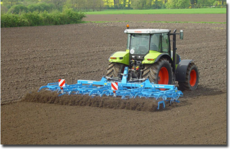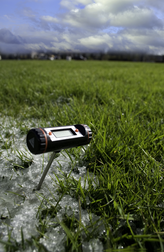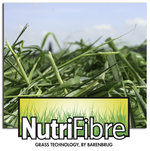Four best practices to get your NutriFibre grassland ready for spring
Spring is coming… Time to prepare your grassland! Barenbrug explains how your fields with NutriFibre technology (soft leaf tall fescue) can be optimally prepared for the coming season.
 1. Soil preparation: a quick start with a clean seedbed
1. Soil preparation: a quick start with a clean seedbed
NutriFibre is famous for its strong, long roots. You can help the roots to grow deeply by preparing your soil with good ploughing. This will loosen deeper soil levels. NutriFibre establishes slowly, so it will give the best results if the seeds are sown in a clean field with no weeds. Do you expect a high weed pressure on your field? In that case, NutriFibre will benefit from some extra weed control after sowing.
2. Start sowing: NutriFibre likes warm feet
You can start sowing your field from March or April. If you not sure when to start, soil temperature is an important indicator to determine the right moment for sowing. NutriFibre grass grows best at a soil temperature of at least 10-12 °C. In comparison: ryegrass fields can be sown at a soil temperature of 8 °C.
3. Sow more, grow more
It is important that the NutriFibre field has enough plants per square metre from the start, since the tillering habit of NutriFibre is different to other grasses. The recommended sowing rate for NutriFibre is therefore higher than the recommended rate for perennial ryegrass. If you sow more seeds in your field in the beginning, the field will benefit for years.
3. Sow more, grow more
It is important that the NutriFibre field has enough plants per square metre from the start, since the tillering habit of NutriFibre is different to other grasses. The recommended sowing rate for NutriFibre is therefore higher than the recommended rate for perennial ryegrass. If you sow more seeds in your field in the beginning, the field will benefit for years.
4. Facilitate optimal establishment and growth
Because of its long roots, NutriFibre is able to attract water from the soil even in dry periods. It will keep on growing during drought and keeps the weeds out of the field. However, during establishment it needs some help to compete with other grasses since it establishes slowly. Making an early first cut, in order to remove weeds and to make sure the grasses will obtain maximal sunlight, is recommended practice. The grass can be cut when it is at least 15 cm tall and when the plants have good soil contact.
 Apply these four practical tips and get the optimal benefits from NutriFibre!
Apply these four practical tips and get the optimal benefits from NutriFibre!
Click here to read more about Nutrifibre.

